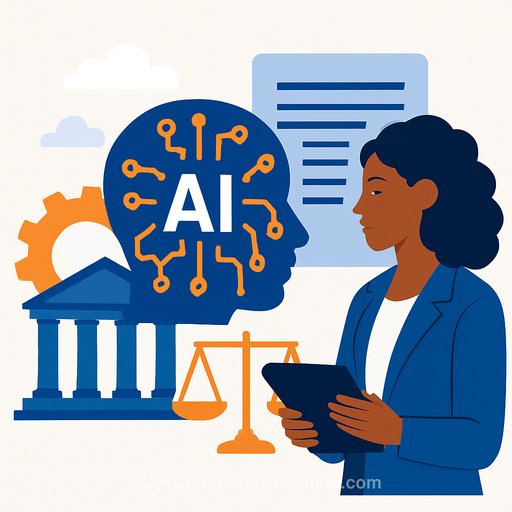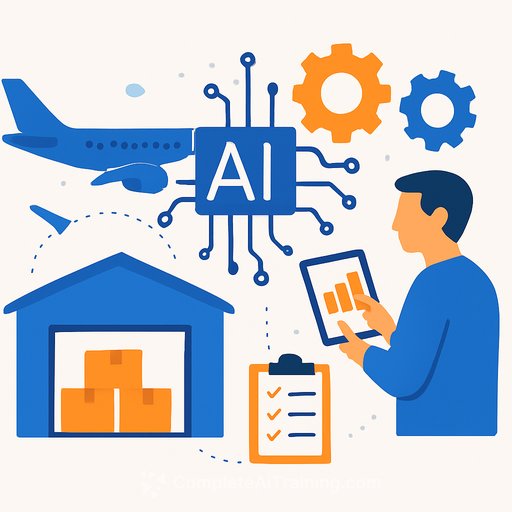AI cost cutting gains ground in back-office IT operations
AI is shaving costs where few customers look: infrastructure and operations. A recent Gartner survey shows 54% of I&O leaders are already using AI to reduce spend, and the wins are coming from routine, repeatable work - not flashy customer features.
If you run operations, the signal is clear: aim AI at the plumbing. Fix the expensive, recurring inefficiency first, then scale.
Practical approaches target I&O inefficiency and sprawl
Teams are pointing AI at incident remediation, cloud resource sprawl, capacity planning, and configuration drift. The returns are steady because the work is predictable and the data is there.
Constraints are real. About half of leaders cite cost math as the main hurdle, and 48% report integration headaches. So the priority has shifted to simple automations that fit current workflows and show results fast. One example: use generative AI to review cloud invoices, utilization, and architecture choices - work that used to take days from FinOps and SREs can be condensed into hours with clear recommendations.
Evidence: back-office outperforms flashy ideas
MIT's research finds roughly 95% of companies experimenting with AI see little or no financial impact. The 5% that do see results focus on back-office automation: IT service management, procurement, and compliance monitoring. Forrester calls this "functional" AI.
- Ticket prioritization and routing
- Capacity hot-spot prediction
- Backup schedule optimization
- Auto-rightsizing compute and storage
None of this is glamorous. It just moves the numbers that matter.
Where the savings are: cloud, AIOps, and automation
- Cloud cost governance: Parse billing data, map spend to business units, flag idle assets, and suggest rightsizing or reservations. Enforce policies before waste creeps back in.
- AIOps and observability: Deduplicate and cluster events, correlate logs and metrics, group alerts, and suggest fixes. Add noise suppression, early anomaly detection, and safe rollback guidance.
- Automation of I&O grunt work: Patch orchestration, configuration compliance, endpoint hygiene, and backup verification with guardrails so engineers can focus on architecture and resilience.
These work because the data is accessible, the benefits are quantifiable, and the metrics are simple: lower cloud bills, fewer tickets, faster MTTR, tighter compliance. Baseline now; prove change in weeks, not quarters.
Governance and security gaps can erase gains
A SAS and IDC survey shows about 65% of organizations use AI in consumer engagements, yet only 40% have a strong safety policy with clear guardrails. Projects stall without governance or get throttled by risk teams.
Security lapses can wipe out savings. The National Cybersecurity Alliance reports 43% of workers have shared unprotected, AI-sensitive data - one incident can zero out your cost reductions. See guidance from the National Cybersecurity Alliance.
Start small: pilots tied to ROI, cost, and observability
- Define a narrow pilot with explicit risk boundaries; log every AI action and decision.
- Tie outputs to a dollar goal: "Reduce 20% in these three categories." Time-box the pilot.
- Pick a fit-for-purpose model; connect it to cost data and observability signals.
- Instrument feedback loops so recommendations improve and savings compound.
- Start where proof is fastest: cloud cost analysis, ticket triage, and auto-remediation for frequent incidents.
- Bring finance and security in early to validate savings and guardrails.
What to track on your Ops dashboard
- Cloud spend and verified savings (rightsizing, reservations, idle asset cleanup)
- Reliability: MTTR, ticket volume, alert noise reduction
- Compliance: drift detected vs. remediated, patch latency
- Productivity: tickets per engineer, automation coverage, rework rate
- Adoption quality: % AI recommendations accepted, human overrides with reason codes
- Safety: incidents, near misses, data exposure events
Common blockers and how to remove them
- Data access: Integrate with the tools you already use (ITSM, CMDB, cloud billing) before adding new ones.
- Integration debt: Put the model where the data already lives; avoid bespoke pipelines upfront.
- Change management: Start as a copilot with human approval; graduate to auto-remediation for known, low-risk incidents.
- Risk control: Use least-privilege, scoped credentials, and pre-approved action catalogs.
- Noise and false positives: Apply alert suppression, event clustering, and confidence thresholds.
Infrastructure-first strategies deliver dependable AI savings
The most reliable savings come from automating fundamentals in I&O. Clean up costs, stabilize operations, and let proof stack up. Big bets get easier when the basics are already paying for themselves.
If your team is building skills in automation, cost governance, and AIOps, explore curated tracks here: Complete AI Training - Courses by Job. For current industry context on adoption and savings patterns, review Gartner's latest insights: Gartner Research.
Your membership also unlocks:






